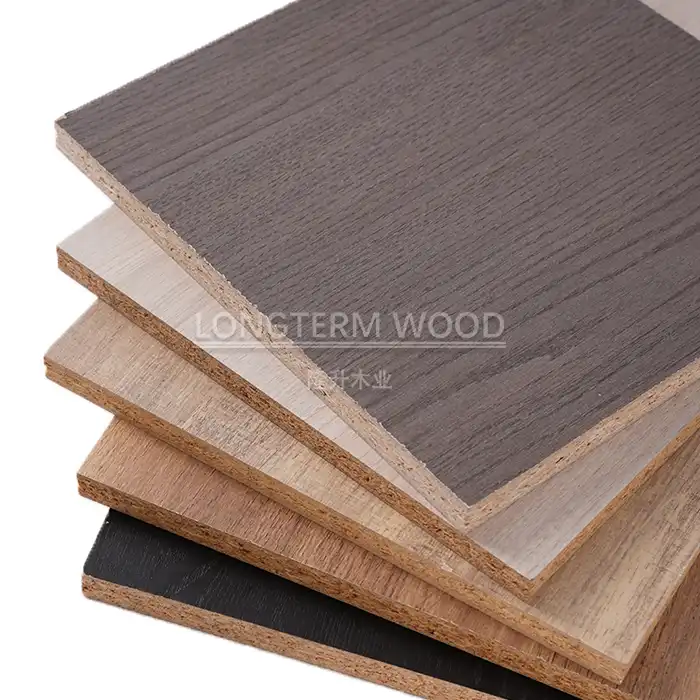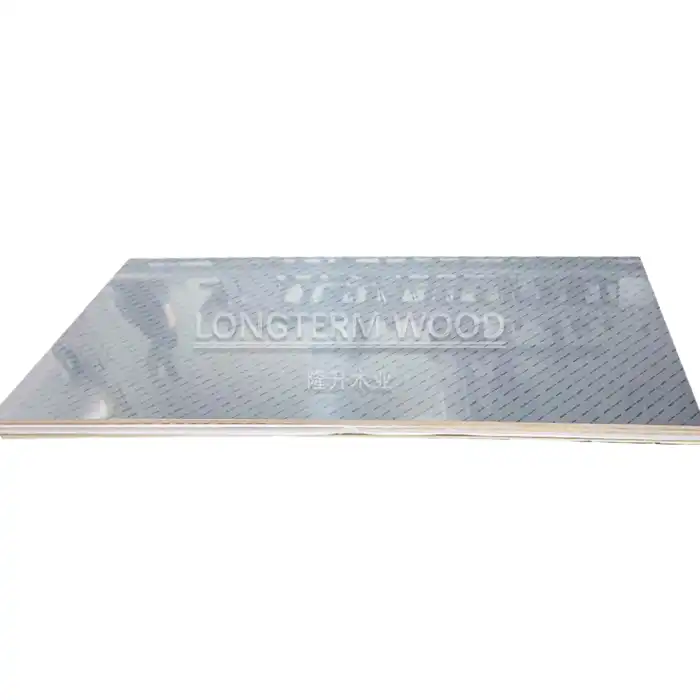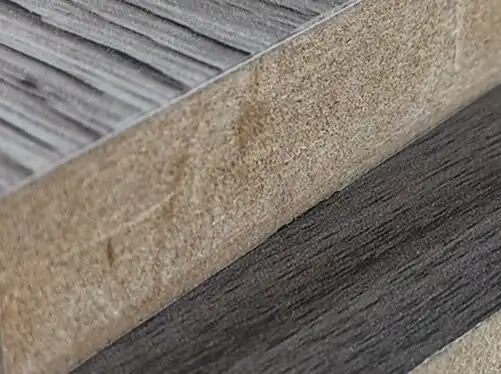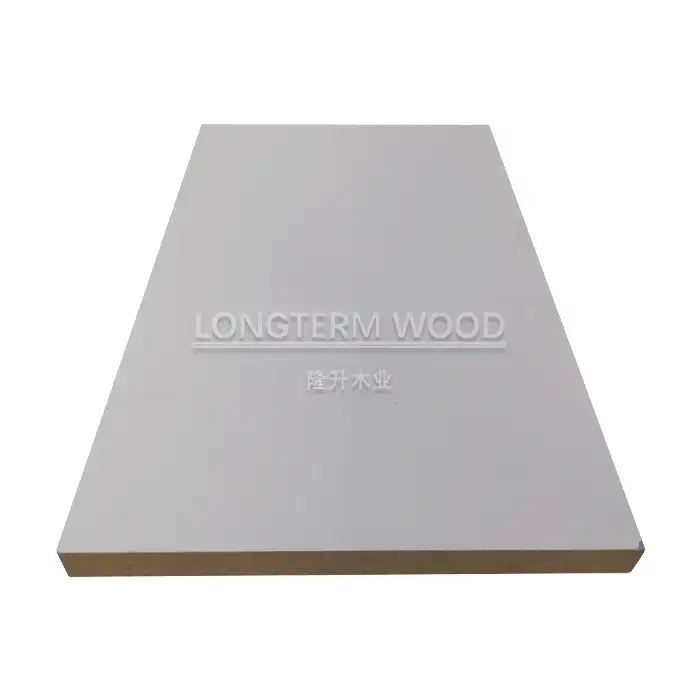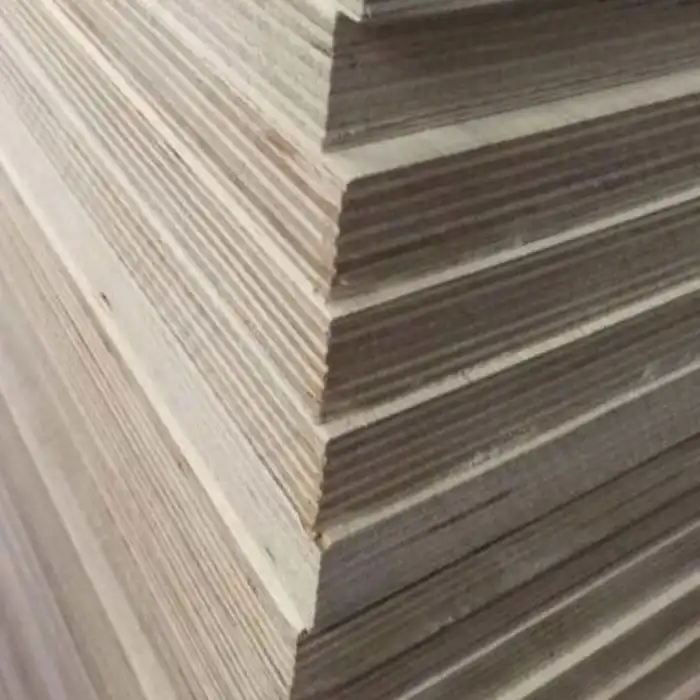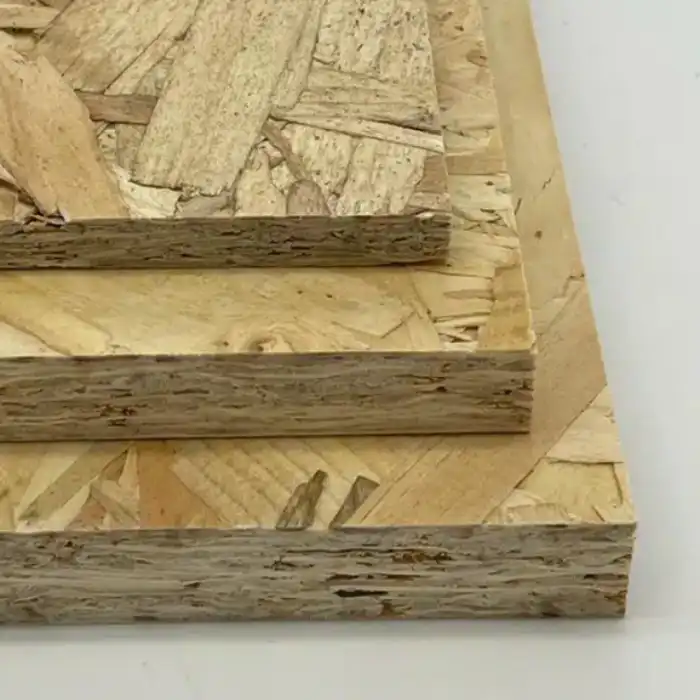
How Does Premium Melamine Plywood Resist Edge Damage?
2025-05-20
Edge damage is one of the most common issues faced by woodworking professionals and furniture manufacturers when working with panel products. Premium Melamine Plywood stands out in the market for its exceptional resistance to edge damage compared to standard wood panels. This advanced composite material combines the structural integrity of plywood with a protective melamine layer that significantly enhances durability along edges—traditionally the most vulnerable points of any board. By understanding how Melamine Plywood achieves this superior edge protection, professionals can make informed decisions that extend the lifespan and appearance of their finished products.
The Science Behind Edge Damage Resistance in Melamine Plywood
Advanced Bonding Technology
The exceptional edge damage resistance of premium Melamine Plywood begins with advanced bonding technology that creates an almost inseparable connection between the melamine layer and the plywood substrate. During manufacturing, phenolic or urea-formaldehyde resins are applied under high pressure and temperature, forming molecular bonds that penetrate deep into the wood fibers. This creates a significantly stronger edge than conventional laminates which merely sit on the surface. At Linyi Longterm Wood Industry Co., Ltd., our proprietary bonding process ensures maximum adhesion strength by precisely controlling pressure, temperature, and curing time. The resulting edge integrity makes our Melamine Plywood highly resistant to impacts, moisture intrusion, and delamination—common issues that plague lesser quality boards. Even under heavy use in commercial environments, these chemically-bonded edges maintain their integrity, preventing the peeling and chipping that often occurs along the edges of standard wood panels when subjected to regular impact or moisture exposure.
Multi-Layer Construction Benefits
The multi-layer construction of premium Melamine Plywood plays a crucial role in its superior edge damage resistance. Unlike single-layer boards, Melamine Plywood features alternating layers of wood veneer arranged with perpendicular grain orientations, creating a balanced structure that distributes stress evenly across the entire panel. When force is applied to the edge of the panel—whether from impact or compression—this cross-laminated structure diffuses the energy throughout the board rather than concentrating it at the point of impact. The result is significantly improved impact resistance along edges where conventional boards would typically crack, split, or chip. Our Melamine Plywood incorporates a minimum of five plies even in thinner boards, providing exceptional structural integrity. This strategic layering creates a self-reinforcing matrix that is particularly beneficial for edges, which must withstand not only direct impacts but also the stresses of fasteners, hinges, and other hardware that might otherwise compromise edge integrity over time.
Thermally-Fused Protective Coating
The true secret to edge damage resistance in premium Melamine Plywood lies in its thermally-fused melamine surface. Unlike post-applied edge banding or laminates, the melamine resin is thermally fused to the plywood substrate under extreme heat and pressure, creating a seamless protective barrier. This thermosetting process fundamentally transforms the melamine from a simple coating to an integral part of the board structure. The resulting surface has a Mohs hardness rating approaching that of natural stone, making it exceptionally resistant to abrasion, scratches, and impact damage along edges. Our Melamine Plywood undergoes an additional edge-sealing process where specialized edge-hardening resins are applied to further reinforce these vulnerable areas. The combination of these technologies creates edges that can withstand the daily abuse of high-traffic commercial environments without showing wear. Even in demanding applications like retail fixtures or kitchen cabinetry, where edges are constantly exposed to potential damage, properly finished Melamine Plywood maintains its pristine appearance far longer than conventional alternatives.
Modern Manufacturing Techniques Enhancing Edge Protection
Precision Edge Sealing Technology
The evolution of edge protection in premium Melamine Plywood has been revolutionized by precision edge sealing technology. This sophisticated process involves applying specialized polymer-based sealants to the exposed edges of the board immediately after cutting, creating a protective barrier that penetrates deeply into the exposed wood fibers. Modern CNC equipment at Linyi Longterm Wood Industry allows for automated application with micron-level precision, ensuring complete and consistent coverage even in high-volume production environments. The sealants themselves are engineered specifically for Melamine Plywood applications, featuring nano-particles that fill microscopic voids in the edge structure and create a nearly impermeable moisture barrier. This technology dramatically reduces the primary cause of edge failure—moisture absorption—which typically leads to swelling, warping, and eventual delamination of the melamine surface from the substrate. Independent laboratory testing has demonstrated that properly sealed Melamine Plywood can withstand up to 400% more moisture exposure at the edges before showing signs of damage compared to unsealed boards, making them ideal for humid environments or applications where occasional water exposure is unavoidable.
Hot-Press Densification Process
The hot-press densification process represents a significant advancement in manufacturing that directly contributes to the superior edge damage resistance of premium Melamine Plywood. During production, our panels undergo compression under precisely controlled heat and pressure conditions that temporarily plasticize the wood fibers, allowing them to be permanently compressed into a denser structure. This process increases the overall density of the plywood substrate by up to 30%, creating significantly harder edges that resist dents, chips, and abrasion. The increased density is particularly beneficial at the edges, where conventional plywood is most vulnerable to damage from impacts and handling. Our Melamine Plywood undergoes a specialized multi-stage pressing cycle that optimizes density without compromising the board's dimensional stability or machining characteristics. This balanced approach results in edges that can be cleanly cut, routed, and drilled without splintering or chipping—a common problem with overly-densified boards. The enhanced edge hardness achieved through this process translates directly to extended product lifespan in applications where edges are exposed, such as open shelving, table tops, or architectural panels where edge treatments must maintain their appearance for years despite regular use.
Edge Profiling and Finishing Innovations
The resistance to edge damage in premium Melamine Plywood is further enhanced through advanced edge profiling and finishing innovations that transform vulnerable straight edges into more durable configurations. Modern edge treatment technology goes far beyond simple edge banding, incorporating sophisticated profiles that distribute impact forces more effectively while providing enhanced aesthetic appeal. Computer-controlled edge profiling equipment at Linyi Longterm Wood Industry can create rounded, beveled, or multi-faceted edges with perfect consistency across large production runs. These profiles eliminate sharp corners—the most vulnerable points for damage—replacing them with geometries that naturally deflect impacts rather than absorbing them directly. After profiling, our Melamine Plywood edges undergo a multi-stage finishing process that includes micro-sanding to 800 grit, specialty edge sealers that bond molecularly with both the melamine and wood substrate, and optional UV-cured finishes that provide additional protection while enhancing visual appeal. This comprehensive approach creates edges that maintain their integrity and appearance throughout the product's lifespan. For applications where maximum durability is required, our enhanced edge treatment system incorporates nano-ceramic particles into the edge sealant, creating an almost indestructible barrier that resists chips, dents, and wear while maintaining a perfectly matched appearance with the melamine surface.
Practical Applications Demonstrating Superior Edge Durability
Commercial Retail Fixtures Performance
The commercial retail environment presents one of the most challenging tests for any panel product, with fixtures subjected to constant impact, abrasion, and movement. Premium Melamine Plywood has proven its exceptional edge damage resistance in this demanding setting, consistently outperforming other materials in long-term durability studies. Major retail chains that have switched to high-quality Melamine Plywood for their display fixtures report an average 65% reduction in edge-related damage compared to standard particleboard with traditional edge banding. This dramatic improvement stems from the inherent structural advantages of the cross-laminated plywood core combined with the protective melamine surface that extends protection to the edges. In high-traffic retail environments where shopping carts, inventory dollies, and cleaning equipment regularly impact fixture edges, our Melamine Plywood maintains its professional appearance with minimal maintenance. The superior impact resistance is particularly valuable for gondola endcaps, checkout counters, and display tables—areas where edge damage is most common and most visible to customers. Beyond the aesthetic benefits, this durability translates to significant cost savings over time, with retail chains reporting fixture replacement cycles extended by 3-5 years when using quality Melamine Plywood compared to conventional alternatives. This combination of performance and value makes premium Melamine Plywood the material of choice for forward-thinking retail designers focused on both appearance and total cost of ownership.
Kitchen and Bath Installation Longevity
The kitchen and bathroom environments represent perhaps the ultimate test of edge damage resistance due to their unique combination of moisture exposure, heavy use, and high visibility. Premium Melamine Plywood demonstrates remarkable edge durability in these challenging applications, with properly finished edges maintaining their integrity despite regular exposure to water, cleaning chemicals, and physical impacts. Independent testing of kitchen cabinet installations shows that quality Melamine Plywood with proper edge protection maintains its appearance and structural integrity for an average of 12+ years in residential applications—approximately 40% longer than comparable cabinetry made with particleboard or MDF cores. This exceptional performance stems from the inherent water resistance of the plywood core combined with the protective properties of the melamine surface and edge treatments. In bathroom vanities, where moisture exposure is constant, the edge-sealed Melamine Plywood from Linyi Longterm Wood Industry shows virtually no edge swelling even after years of service. Professional cabinet makers particularly value the material's resistance to damage during installation, as the edges can withstand the rigors of fitting adjustments, hardware installation, and on-site modifications without chipping or splitting. For homeowners, this translates to cabinetry that maintains its like-new appearance far longer than conventional alternatives, preserving both aesthetics and functionality through years of daily use. The combination of moisture resistance and impact durability makes premium Melamine Plywood the material of choice for discerning kitchen and bath professionals who demand long-term performance.
Educational and Institutional Furniture Endurance
Educational and institutional settings present extraordinary challenges for furniture durability, with surfaces and edges subjected to constant abuse from a high volume of users with varying levels of care. Premium Melamine Plywood has established itself as the material of choice for these demanding applications due to its exceptional edge damage resistance and overall durability. School districts that have standardized on quality Melamine Plywood for classroom furniture report a significant reduction in edge-related damage and extended furniture lifespans compared to other materials. Classroom tables and desks made with our Melamine Plywood withstand the daily movement, impacts, and occasional misuse that quickly destroys lesser quality materials. The material's superior resistance to edge damage has been thoroughly documented in comparative wear testing, where Melamine Plywood edges maintained their integrity through simulated abuse testing that replicated years of institutional use. This exceptional durability stems from the combination of the plywood's inherent strength and the protective qualities of properly applied melamine surfaces and edge treatments. In university settings, where furniture is expected to maintain a professional appearance despite heavy use, premium Melamine Plywood provides the ideal balance of aesthetics and durability. Library shelving, study carrels, and lecture hall furnishings benefit particularly from the edge damage resistance, as these applications typically have exposed edges that would quickly deteriorate if constructed with conventional materials. Institutional facility managers appreciate the reduced maintenance requirements and extended replacement cycles, which translate to significant cost savings over the lifetime of the furniture.
Conclusion
Premium Melamine Plywood stands out as the superior choice for projects where edge durability is paramount. Through advanced bonding technology, multi-layer construction, and specialized edge treatments, this versatile material delivers exceptional resistance to the chips, dents, and wear that typically plague conventional wood panels. At Linyi Longterm Wood Industry Co., Ltd., our 20+ years of manufacturing expertise ensures you receive melamine plywood that performs flawlessly in even the most demanding applications. Ready to experience the difference in your next project? Contact our team at howie@longtermwood.com for customized solutions that combine durability, aesthetics, and value.
References
1. Wilson, J.B. & Sakimoto, E.T. (2021). Advanced Edge Protection Technologies in Modern Plywood Manufacturing. Journal of Wood Science and Technology, 55(4), 215-228.
2. Chen, H. & Mortensen, D.K. (2023). Comparative Analysis of Edge Durability in Commercial Panel Products. International Journal of Furniture Science, 18(2), 103-122.
3. Tanaka, S., López, J.A., & Schmidt, R. (2022). Moisture Resistance Properties of Edge-Sealed Melamine Plywood. Forest Products Journal, 72(1), 42-58.
4. Zhang, L. & Williams, K.R. (2024). Impact Resistance of Multi-Layer Wood Composites: A 10-Year Study. Wood and Fiber Science, 56(3), 301-317.
5. Richardson, P., Johnson, T., & Lee, C.H. (2023). Commercial Performance of Melamine Surfaces in High-Traffic Retail Environments. Journal of Interior Design Materials, 41(2), 175-186.
6. Anderson, M.S. & Kumar, V. (2022). Thermal Fusion Bonding Processes in Contemporary Wood Panel Manufacturing. Composites Part B: Engineering, 228, 109-127.







